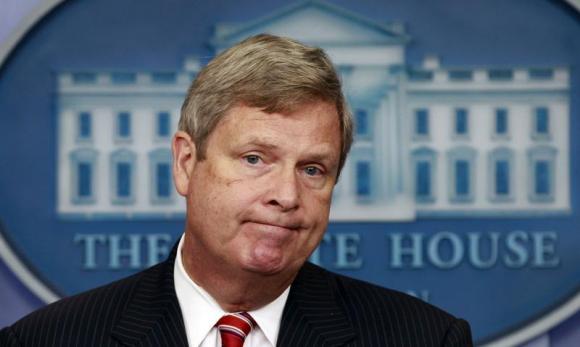 meat and poultry inspections contained in the Obama administration's 2015 budget proposal does not mean less attention to food safety, U.S. Agriculture Secretary Tom Vilsack said on Tuesday.
meat and poultry inspections contained in the Obama administration's 2015 budget proposal does not mean less attention to food safety, U.S. Agriculture Secretary Tom Vilsack said on Tuesday."The bottom line is - we are not compromising safety here," Vilsack said on a conference call with reporters following the release of the White House's budget proposals.
The proposed budget of USDA's Food Safety and Inspection Service (FSIS), whose primary role is to ensure the safety of meat, poultry and egg products produced in the United States, was trimmed by some $9.3 million for fiscal 2015 from the enacted level of 2014, to just over $1 billion.
Vilsack said the cut was made possible by a proposal to implement new methods of poultry inspection, "which have not really changed much in the past 60 years."
The budget document also noted a proposal for a new user fee to be charged to plants that have sample failures or require additional inspections due to non-compliance with regulations.
Recent data suggests an 11 percent decrease in the amount of food-borne illnesses attributable to products that FSIS is responsible for, Vilsack said, without specifying the period over which that declined had occurred.
"I'm confident that what we are proposing will actually reduce illness," he said.
Vilsack said a separate budget proposal to trim the assistance given to farmers to pay for crop insurance premiums, and limit reimbursements to the private companies that administer the programs, was a matter of fairness.
The crop insurance program, which costs the government an average of $9 billion a year to run, needs to be "as fair to taxpayers as it is to producers and insurers," Vilsack said.
The White House estimates its proposal would yield $14 billion in savings over a decade by setting payments at "more reasonable levels."
Other elements of the USDA budget included increased grants for broadband Internet access for rural communities, and a $50 million research program to strengthen habitats of bees, whose population has been in decline.
"Agricultural productivity is directly dependent on pollinators, especially bees, for producing more than one-third of food products," the budget proposal said.
The USDA's proposed discretionary spending in fiscal 2015 would be $23.7 billion, down $938 million from the enacted 2014 level.
Trimmed or eliminated for 2015 were an international forestry program, public broadcasting grants, certain rural housing grants and water/wastewater grants and loans.
"When you have to fit things into a finite amount of funding, you have to make choices," Vilsack said. "These are tight budget times."





